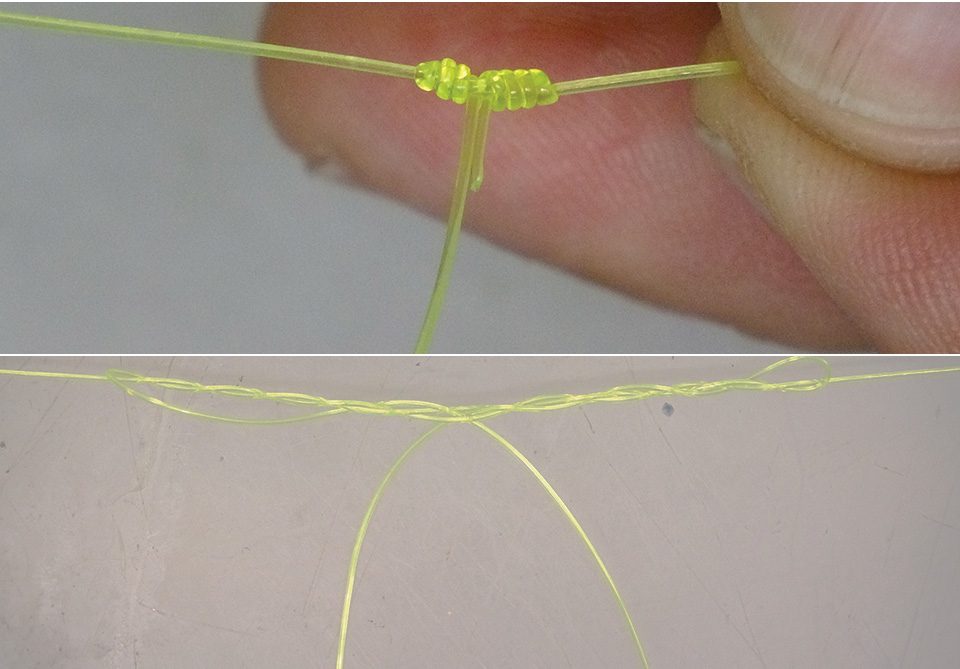By Tim Barefoot
How to make a double tackle.
There are several ways to make this double tackle, but this one simple knot makes a wonderful, heavy-duty presentation. Some folks refer to this as a “high/low rig,” and you can call it anything you want, but for the sake of this article I’ll just call it a “double tackle.”
To start with, consider the fish you are targeting and choose the correct size fluorocarbon for the leader. You can tie this knot in almost any size fluoro up to 80- or 100-pound. A rig like this is extremely effective on quite a few species and gets a lot of “reaction strikes” due to the multiple offerings presented and the erratic action of the baits.
Using a heavier jig on the bottom keeps the lighter jig, streamer fly or unweighted soft plastic in place. It’s less likely to foul and makes the action more erratic, which draws the instinct strikes. The darting action resembles a scared or confused baitfish, which is irresistible to predatory fish, and the trailing bait is an easy target. These are the baitfish they have been programmed to eat since birth. It makes perfect sense, as they exert less energy to catch disoriented baitfish than those swimming perfectly in open water.
There are two primary considerations when choosing the poundage of the fluoro leader material, water clarity and quarry. After choosing the correct size jigs and fluoro, it’s time to determine the lengths of the two legs of the rig. I start with about a 4- or 5-foot length of leader and make a 10- to 12-inch diameter loop in the center of the leader. This is typical for smaller inshore or freshwater fish, but can be made larger and longer for larger fish and jigs for a variety of offshore fish.

At this point, hook the 1-foot diameter loop onto something that allows you to pull all three legs of the tackle together with equal pressure and lubricant (saliva). Now, pull the two tag ends HARD as well as the loop to secure the knot down tight. Clip one of the two sides of the loop (shown in photo) and this makes the second leg of the “double tackle.”
This might sound complicated, but it’s actually quite simple. For a detailed video, visit the website and the watch the video named “Double Tackle”
Check out Tim’s website at www.barefootcatsandtackle.com.

